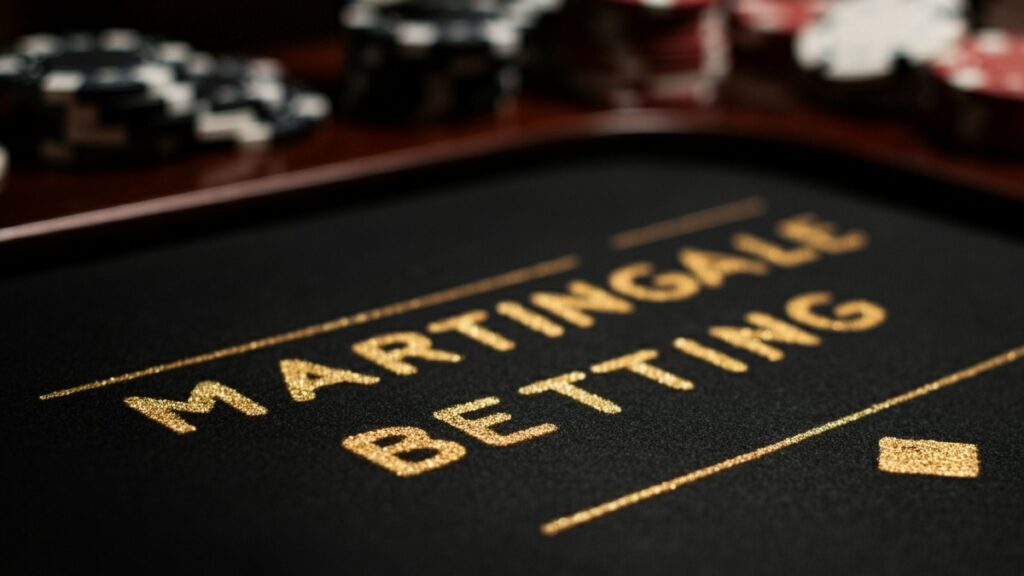The Martingale betting system is infamous in the online gambling community. It’s a popular strategy that seems like it cannot fail (except when it inevitably does!).
In all seriousness, we’re going to break down exactly what this system is, its success rate, and whether or not it’s a good strategy to try.
What is the Martingale system?
The idea behind the Martingale system is essentially to trust that you’re going to ‘win eventually.’ It works best with even-money bets (such as Red/Black in roulette).
Whenever you lose a bet, the Martingale strategy says to repeat the same bet but double your wager. We’ll go through an example shortly, but the point is that you keep doubling your bet until you win, and when you do, you’ve made all your money back plus a bit of profit.
Example
Suppose John walks into the casino with $200, with the goal of making a measly $5 profit. In fact, he says he will not leave the casino until his bankroll is up to $205 (or goes broke). He believes he has a foolproof strategy.
John heads to the European roulette table, and he plans to place a $5 bet on Red. If he wins, he’s achieved his goal and he can leave. However, if he loses, he’ll double his bet on Red to $10. He’ll repeat this process until he’s up $5 or lost all his money (or can’t afford his next bet).
The only way John doesn’t walk out of the casino with $205 is if he loses every bet he can afford. Let’s break this down this worst-case scenario:
| Bet | Bet Amount | Result |
| Red | $5 | Loss |
| Red | $10 | Loss |
| Red | $20 | Loss |
| Red | $40 | Loss |
| Red | $80 | Loss |
There’s a 19/37 chance of John losing any given spin when he bets on Red (check out our very own roulette calculator to confirm this!), and the chances of this occurring 5 times in a row is just 3.57%. This implies that John has a 96.43% chance of success with his Martingale strategy.
It is worth noting that John would not have been able to afford a sixth bet, as he had already lost $155 after losing five in a row, his next bet would have needed to be $160, and he only brought $200 to the casino.
High success rate?
It seems like the Martingale strategy has a very high success rate. After all, John had over a 96% chance of being successful with his strategy.
However, the key takeaway is that 3.57%, John’s chances of losing, is not the same as 0%. It is unlikely but not impossible, and in fact will eventually occur if John tries this strategy over and over. And when inevitably does occur, he will have lost most, if not all of his money, without a chance to make it back.
“But I will win eventually, right?”
Actually, yes! A common misconception is that the martingale strategy doesn’t work at all. The truth is it does (in theory!). The math says that if you keep doubling your bet any time you lose, you will win eventually and make it all back. Casinos know this, which brings us to two other problems with the Martingale system.
Other problems with the Martingale strategy
Casinos are smart: they know the Martingale strategy has a high success rate and actually works in theory. There are two main reasons why the Martingale system does not work in practice:
- Casinos impose betting limits: If a casino sets a max bet limit of $3000 at your roulette table, then the Martingale system fails as soon as you go on a long enough losing streak where your next bet needs to exceed $3000.
- No one has infinite money: Long losing streaks while using the Martingale strategy can wipe out even very large bankrolls pretty quickly.
Conclusion
The Martingale strategy is unfortunately a losing one. It absolutely does work in theory if you have infinite money and casinos did not set betting limits, but that is not reality.
That said, the system truly does have a high success rate. The larger your bankroll and the smaller your initial bet, the higher your chance of success will be. Just keep in mind that if things do go wrong, it’ll wipe out your bankroll entirely.

